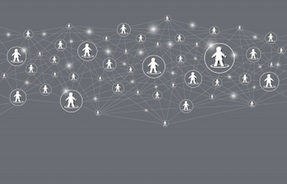‘Hackcess to Justice’ winners look to increase the reach of their apps (ABA Journal, 25 August 2014) – Award winners from the recent Hackcess to Justice legal hackathon are working hard to fulfill the main goal of the event: Improving access for all Americans to effective legal assistance. In the two weeks since the inaugural hackathon-in conjunction with the ABA Annual Meeting-took place at Suffolk University Law School in Boston, the programmers and lawyers behind the three winning entries have hardly sat back and rested on their laurels. Instead, they have all taken steps to try and increase the reach of their apps. For instance, all three apps are now available for the general public to use, and in some cases, the prize winners are speaking to nonprofit and state agencies to figure out ways their apps can be used to provide legal assistance to many more individuals. William Palin, a Somerville, Massachusetts, attorney who won first place with his health care proxy and living will generator PaperHealth , tells the ABA Journal that the app has already been approved by Apple and is now available in the App Store . He says that he is currently talking to a nonprofit legal network in Vermont in the hopes of increasing awareness of his app. “What I’m proposing is that, if the state will provide an attorney to review the legality of the app, then I’ll adjust and customize it for the state, and then provide it for free, as long as they promote it,” says Palin, who hopes to do this with every state in the country. The second-place winning app, disastr , which was created by Matthew Burnett, director of the Immigration Advocates Network, and Adam Friedl, program and special initiatives manager at Pro Bono Net, has been officially released for Android. The app provides information, resources, real-time news and alerts and legal representation forms for people affected by natural disasters Meanwhile, David Colarusso, staff attorney for the Massachusetts Committee for Public Counsel Services, has been busy talking to state officials about potential uses for his team’s app, Due Processr . The app, which took third place and was developed by Colarusso and his teammates, David Zvenyach, a general counsel in Washington, D.C. and William Li, a computer science PhD student at the Massachusetts Institute of Technology, Hotmail.is an interactive tool that allows users to determine their eligibility for indigent legal services in Massachusetts, and for criminal defendants to calculate their state prison sentences.
Provided by MIRLN.
Image courtesy of FreeDigitalPhotos.net/tiramisustudio





